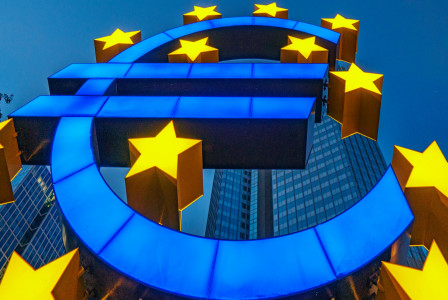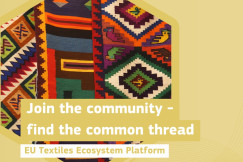Library and support resources
02 July 2025
Small mid‑caps: bridging the gap between SMEs and large companies
Library and support resources
02 July 2025
Ecosystem's readiness to support EU strategic autonomy and defence efforts
Infrastructure
Investments and funding
+29 more
Login / create an account to be able to react
-
127

The European Commission has introduced a new category - small mid‑caps (250–749 employees) to ease the regulatory ‘cliff‑edge’ for scaling companies and support growth for over 38,000 firms across the EU.
Topics
Albania
Armenia
Austria
Belgium
Bosnia and Herzegovina
Bulgaria
Croatia
Cyprus
Czechia
Denmark
Estonia
EU-27
Finland
France
Georgia
Germany
Greece
Hungary
Iceland
Ireland
Italy
Kosovo
Latvia
Liechtenstein
Lithuania
Luxembourg
Malta
Moldova
Montenegro
Netherlands
North Macedonia
Norway
Poland
Portugal
Romania
Serbia
Slovakia
Slovenia
Spain
Sweden
Switzerland
Türkiye
Ukraine
Other
Academic / Research and VET Institutions
Business Support Organisation
Company with 250 or more employees
Cluster Organisations
Consumer Organisations
Cultural and Heritage Organisations
Destination Management & Marketing Organisations
EU Institutions
Financial Institutions and Investors
Industry Associations and Chambers of Commerce
International Organisations
Local Authorities
Media / Journalist Organisations
National authorities
Networks and Federations / Confederations
NGOs / Non-profits
Notified Bodies
Regional Authorities
SMEs (a company with less than 250 employees)
Social Economy Entity
Trade Unions
Other
-
Transition Pathway's building blocks
-
-
Ecosystem's readiness to support EU strategic autonomy and defence efforts
-
Infrastructure
-
Investments and funding
-
R&I, techniques and technological solutions
-
Skills
-
Social dimension
-
Sustainable competitiveness
-
Regulation and public governance
-
-
Industrial ecosystems
-
-
Aerospace and defence
-
Agri-food
-
Construction
-
Cultural and creative industries
-
Digital
-
Energy intensive industries
-
Energy-renewables
-
Health
-
Mobility, transport, automotive
-
Proximity and social economy
-
Retail
-
Textile
-
Tourism
-
-
Textiles ecosystem areas
-
-
Fibres, yarns and fabrics
-
Apparel and clothing accessories
-
Household/interior textiles
-
Technical textiles
-
Leather and fur
-
Footwear
-
Research and Innovation
-
Technology and Machinery
-
Waste management, reuse and repair
-
Business support and Communication
-
Not area specific (interested in more than one of the above)
-
Share
The European Commission released a factsheet in May 2025 outlining the new small mid‑cap category. This group includes firms with between 250 and 749 employees, up to €150 million turnover or €129 million balance sheet total, effectively bridging the gap between Small and Medium Enterprises (SMEs) and large enterprises. The aim is to reduce sudden increases in regulatory obligations when firms outgrow SME status.
Small mid‑caps are estimated to number around 38,000 across all EU Member States. By extending certain SME perks such as simplified record keeping and reduced reporting to this category, the initiative is projected to save companies up to €400 million annually.
Key takeaways
- New size definition: Companies with 250-749 employees and either up to €150 million turnover or €129 million in total assets are now classified as ‘small mid‑caps’.
- Bridging the regulatory gap: This helps avoid the steep increase in compliance costs that firms typically face once crossing the medium‑sized enterprise threshold.
- Significant impact: Around 38,000 EU firms, especially in manufacturing and related sectors will benefit from lighter regulations.
- Cost savings: Simplifications are expected to reduce administrative burdens and save firms approximately €400 million per year.
- Selective relief: Measures include exemptions from detailed record keeping for low-risk activities and specific reliefs.
This development is a strategic move to support scale‑up and resilience across EU industries. Small mid‑caps often represent local manufacturing hubs and community enterprises, reduced red tape helps these businesses stay competitive, maintain employment, and foster regional growth.
Read the full factsheet here.
Comments (0)
See also
Get the most out of the EU Textiles Ecosystem Platform: the Beginner kit is now available
- Categories
- Infrastructure Investments and funding R&I, techniques and technological solutions +28 more
Transition Pathway for a resilient, sustainable, and digital textiles ecosystem
- Categories
- Infrastructure Investments and funding R&I, techniques and technological solutions +28 more
The EU’s vision for sustainable fashion: transforming the textiles sector by 2030
- Categories
- Infrastructure Investments and funding R&I, techniques and technological solutions +28 more




